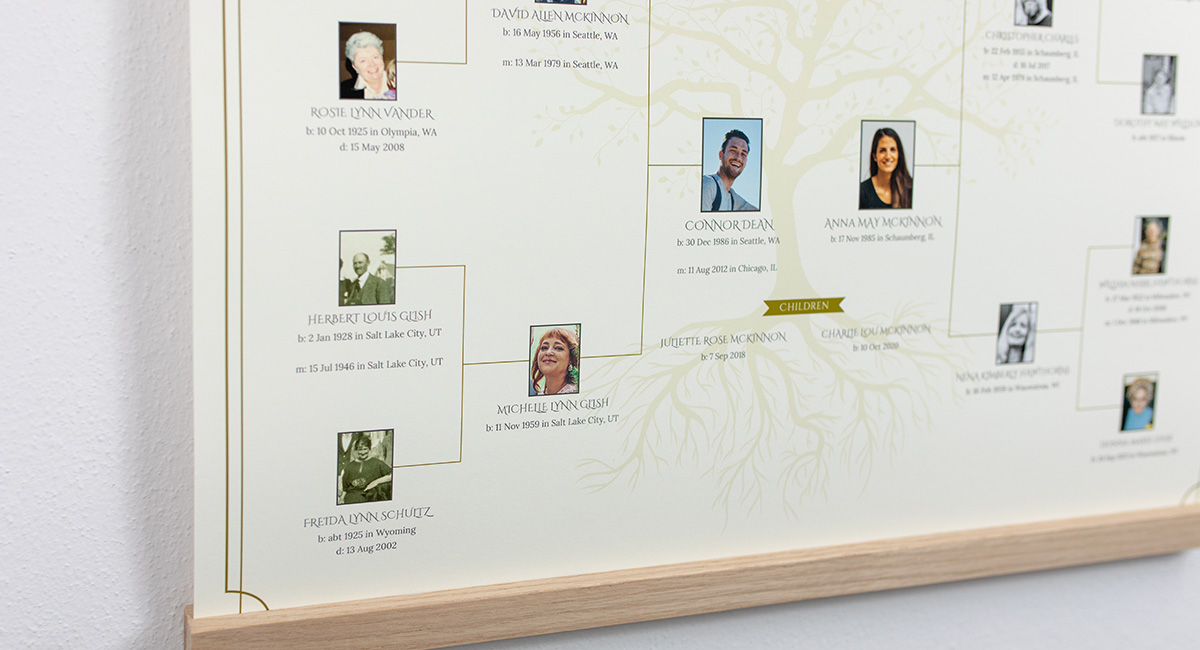Did you know that it is legal in all 50 states to marry your second cousin?¹ Your first instinct is probably “Gross!” or is it?
What exactly is a second cousin anyway? Genealogy terms have always been difficult to understand, but it’s important to know what they mean, and not just so you know if it’s weird to marry your second cousin or not. If you’ve been looking for a guide on how to properly refer to your obscure relatives, then look no further.
When mapping out your family tree it is especially important to know what these terms mean and how closely “Uncle Dwight” is actually related to you. We’ve got the scoop so you can easily decipher what it means when someone is your fourth cousin, what twice removed means, and why we use the term great when referring to your grandpa’s dad.
Quick Glossary:
• Aunt – Your mom or dad’s sister.
• Cousin – Your aunt or uncle’s child. Your cousin is technically your “first cousin” but we use it so commonly it has been shortened to “cousin.”
• First Cousin – This is another term for your “cousin.” First cousins have a common grandparent.*
• Grandma – Your mom or dad’s mom.
• Grandpa – Your mom or dad’s dad
• Great – Used to note how many generations back or forward from the term it is used with. This was first used in the 1700s.²
• Niece – Your sibling’s daughter.
• Nephew – Your sibling’s son.
• Once Removed – One generation back or forward.*
• Second Cousin – You and your second cousin share a great-grandparent.*
• Twice Removed – Two generations back or forward.*
• Uncle – Your mom or dad’s brother.
*Continue reading for further explanation on these tricky ones.
It’s important to note that all these terms are used to describe the relationship between two people in your family tree. As you shift around, the terms will change depending on which relatives relationship you are describing. For example, your mom’s third cousin, Betty, is your second cousin once removed. This is why people often get confused about these terms because they are constantly changing depending on who you are trying to describe the relationship between. For the sake of simplicity, we’ll describe these terms based on their relation to you.
Are they my First, Second, or Third Cousin?
Assuming the cousin we are calculating your relationship to is in the same generation as you, then you will use first, second, or third cousin depending on who your closest shared grandparent is. If you share a grandparent with someone, that is your first cousin. If your closest shared relative is a great-grandparent then that is your second cousin. Total up how many greats your closest shared grandparent has and add one to that number to get what type of cousin they are. So if you share a great great great great grandparent with someone , they are your fifth cousin.
What makes a relative removed?
This term helps us note when you are trying to find the connection between yourself and someone of a different generation than you. This can go either up or down your family tree, so think of yourself as ground zero. Someone who is from the same generation as your parents or the same generation as your children may be considered once removed. Whereas a relative from the same generation as your grandparents or your grandchildren may be considered twice removed. So your grandpa’s cousin, Robert, would be your first cousin, twice removed.
What does that make us?
We often run into problems with these terms because they are not fixed. Instead, these terms describe how people are related to one another. So depending on where those two people are on the family tree it will shift the terminology drastically and cause confusion. That’s why we seem to always be asking, “What does that make us?”
When putting together your family tree – use yourself as a fixed point to describe others’ titles. Whether someone is your “great uncle once removed” is important when describing your relationships. If you don’t know how to properly refer to “Uncle Bill” or “Aunt Judy,” you may cause future generations to put them in the wrong place on the family tree.
Beyond just knowing the right way to refer to your third cousin, it’s important to preserve your family’s history and stories. If you haven’t documented your family relationships before, MyCanvas and Ancestry.com make it easy to do. MyCanvas’s exclusive integration with Ancestry.com will put your second cousin where they belong automatically in your Family Tree Poster or Family History Book. You won’t even have to remember all these genealogy terms … unless you want to show off at your next family reunion.
Want to learn even more? Check out this in-depth video Ancestry.com published on these terms.

Sources Used:
¹https://www.thetech.org/ask-a-geneticist/can-you-marry-cousin#:~:text=In%20the%20United%20States%2C%20second,personal%20and%2For%20cultural%20beliefs
²https://www.dictionary.com/browse/great-grandparent#:~:text=The%20first%20records%20of%20the,be%20added%20for%20each%20generation
• https://familyhistorydaily.com/genealogy-help-and-how-to/cousin-relationships/
• https://www.genealogyexplained.com/what-is-a-second-cousin/
• https://www.familysearch.org/en/blog/what-is-a-second-cousin
• https://www.livescience.com/32121-whats-a-second-cousin-vs-a-first-cousin-once-removed.html



